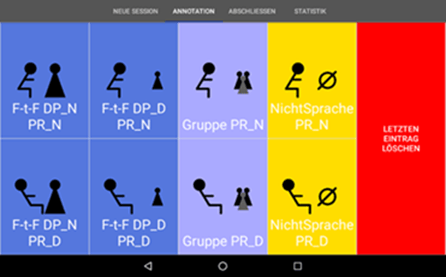
Social behavior impacted by premium hearing aid feature
Communication analysis shows that StereoZoom positively impacts communication in a speech-in-loud-noise environment.
What do we really want for patients who walk through our clinic doors? I think most of us would agree that our goal as audiologists is to improve lives by helping them hear better. Fortunately, most patients and their significant others return to hearing clinics reporting how much better their lives are because of hearing aids. This is great. But this subjective report doesn’t let us know how hearing technology is improving their lives in the real world. Is it as simple as experiencing better speech intelligibility delights them? Or are they experiencing improved well-being because of benefits that go beyond speech intelligibility?
At Phonak, we took a step towards better understanding how hearing aids impact a patient’s communication abilities by using a new method called Communication Analysis. This method allows us to systematically analyze communication behaviors of a hearing aid wearer in different listening environments.
Proven reduction in listening effort with StereoZoom
Our research began with assessing the impact of different microphone technologies on listening effort. This represents a shift from our traditional focus on speech intelligibility as a benchmark of hearing aid performance, and shift was important as Communication Analysis methodology relies on a significant difference between measuring conditions.
This research was completed with 24 subjects who rated listening effort subjectively using an adaptive scaling method in a constant noise environment of 68 dB (A). Here, the researchers showed the premium StereoZoom feature to significantly reduce perceived listening effort for dB SNR values which are reflective of everyday communication levels versus traditional fixed directionality (P<0.05). In establishing a significant reduction in listening effort with this premium feature, this research could then take the next step to identify additional benefits when communicating in a noisy situation.
Body position as an indicator of engagement
The next stage involved 10 subjects who were divided into two equal sized groups. Each group participated in discussions on familiar topics, and were video-recorded while equipped with technology to measure both voice level and head position. One session occurred with StereoZoom activated, while another session occurred with traditional fixed directionality activated. Subject behavior was coded during each session, and I would like to explain how this was achieved.
The screen provided above shows the behaviors coded by observers. You will notice there are four colored areas.
Dark blue
With the four dark blue buttons, the observer coded all face-to-face interactions specifying distance from communication partner (near, distant) and body position (leaning back, leaning forward).
Purple
Purple buttons allowed observers to specify the subject’s body position when communicating with the group (leaning back, leaning forward).
Yellow
The two yellow buttons allowed observers to code subject`s body position when no speech was present (leaning back, leaning forward).
Red
The red button allowed the observer to delete the latest entry in the event of mistakes.
StereoZoom results in higher participation
Through our Communication Analysis, we found that subjects who were fit with the premium StereoZoom feature had 15% more communication changes (e.g., change in body position while listening) than those fit with traditional fixed directionality. What does this mean? The researchers concluded that this 15% change suggests higher participation / more communication during the group conversation.
While there were also other impressive results, I believe this finding of a premium feature affecting a hearing aid wearer’s participation during group conversations to be impressive. Maybe this is one of the reasons why patients report being delighted with hearing aids after trial in the real world.
The full study will be available November 1st, 2018 on the Phonak Evidence page.

